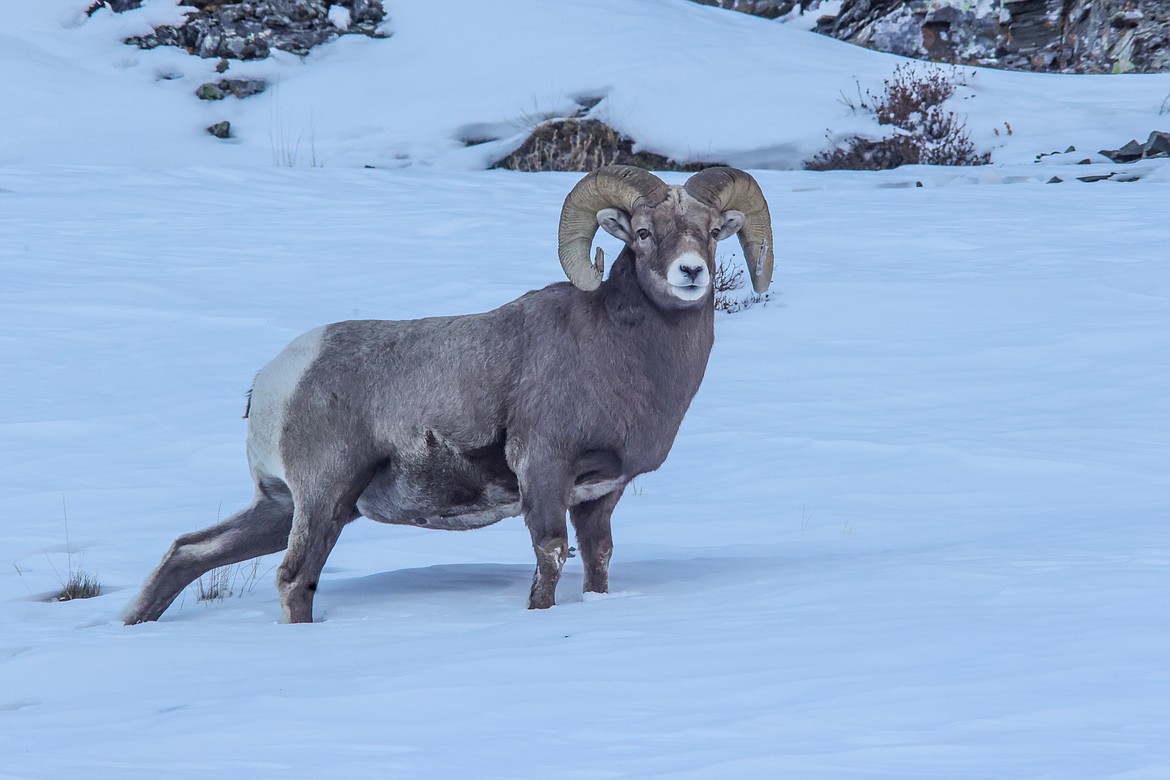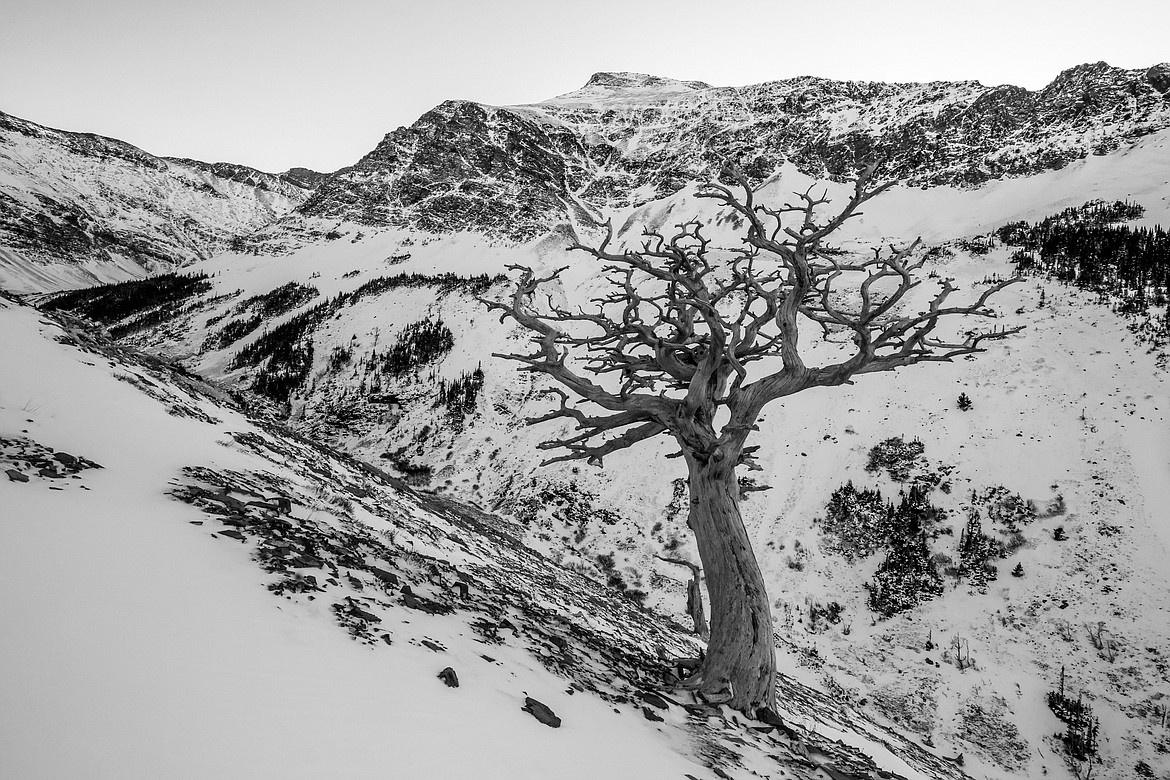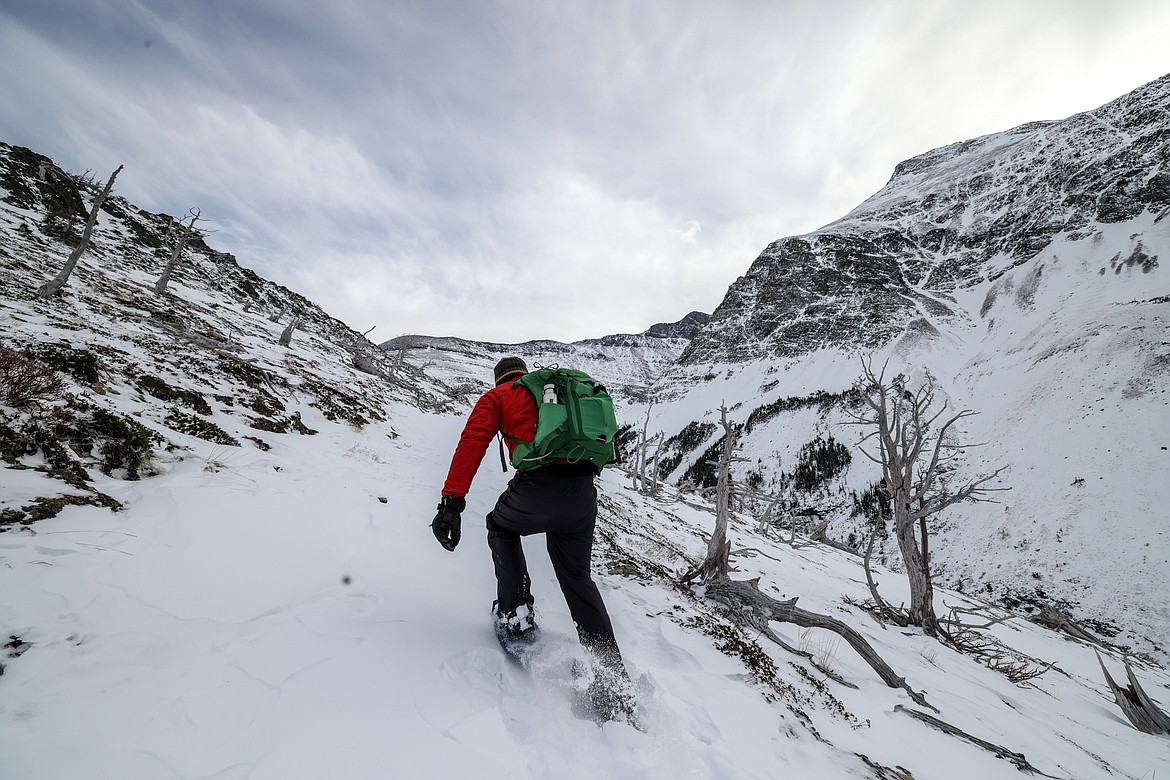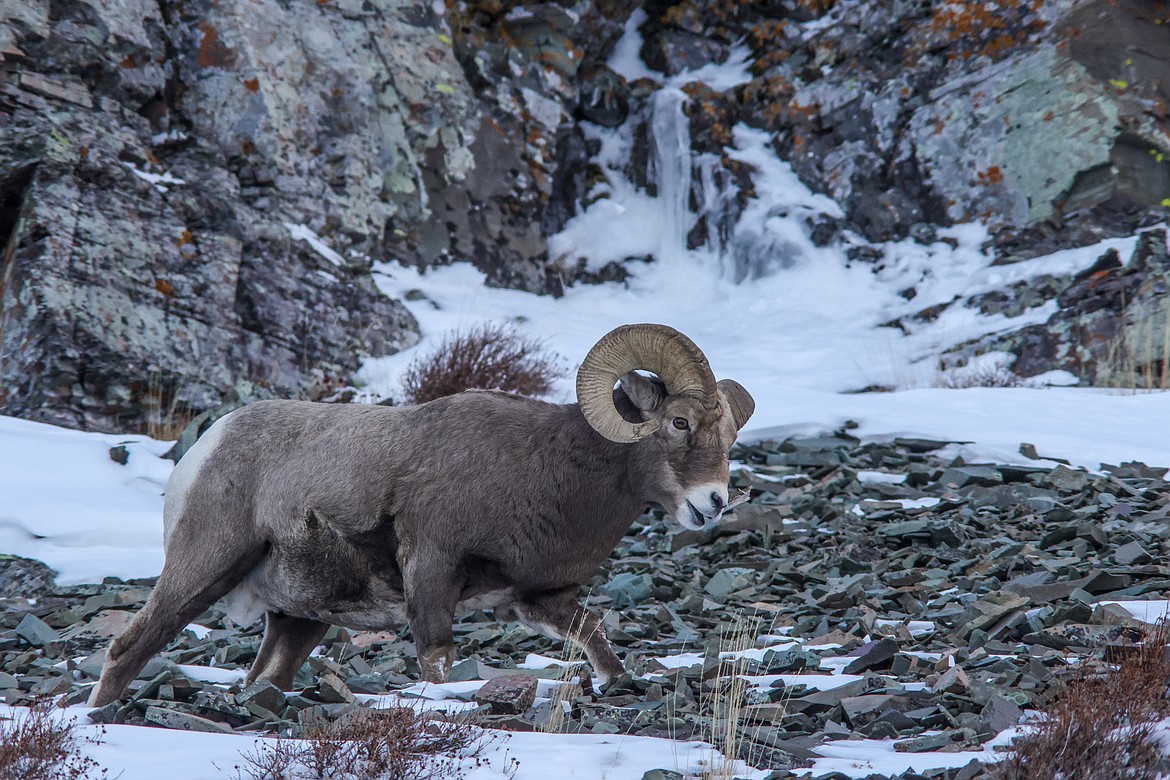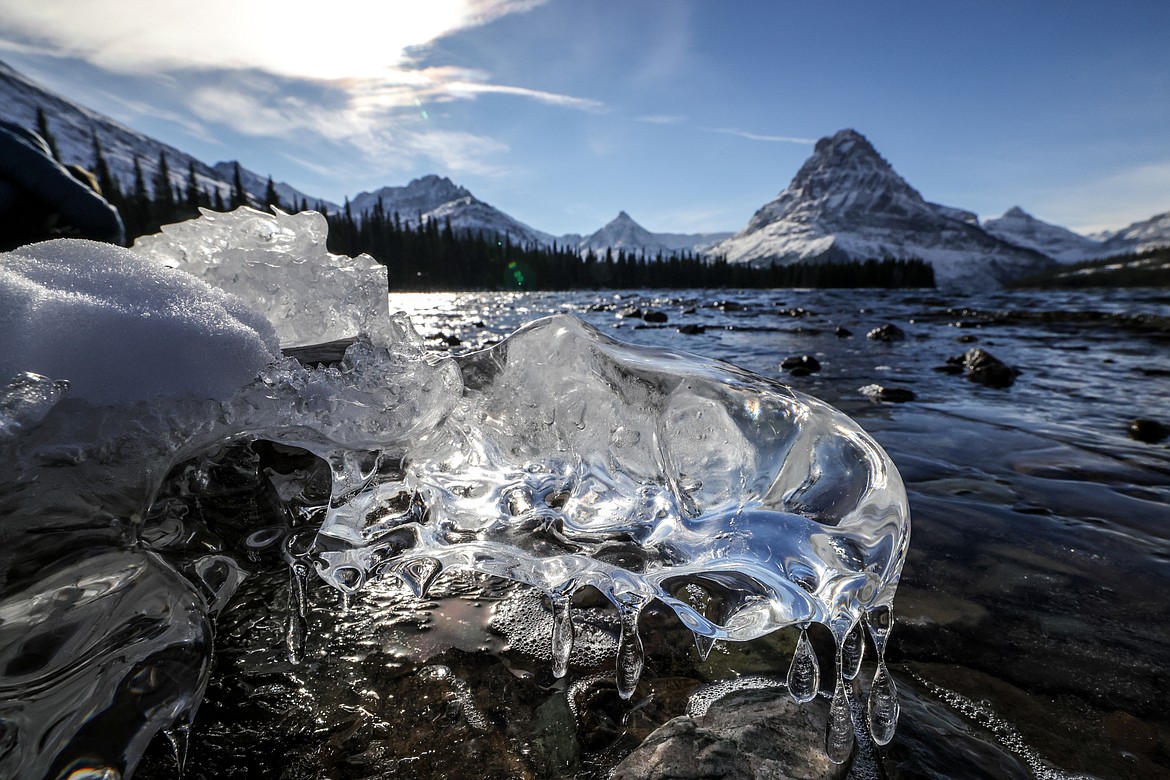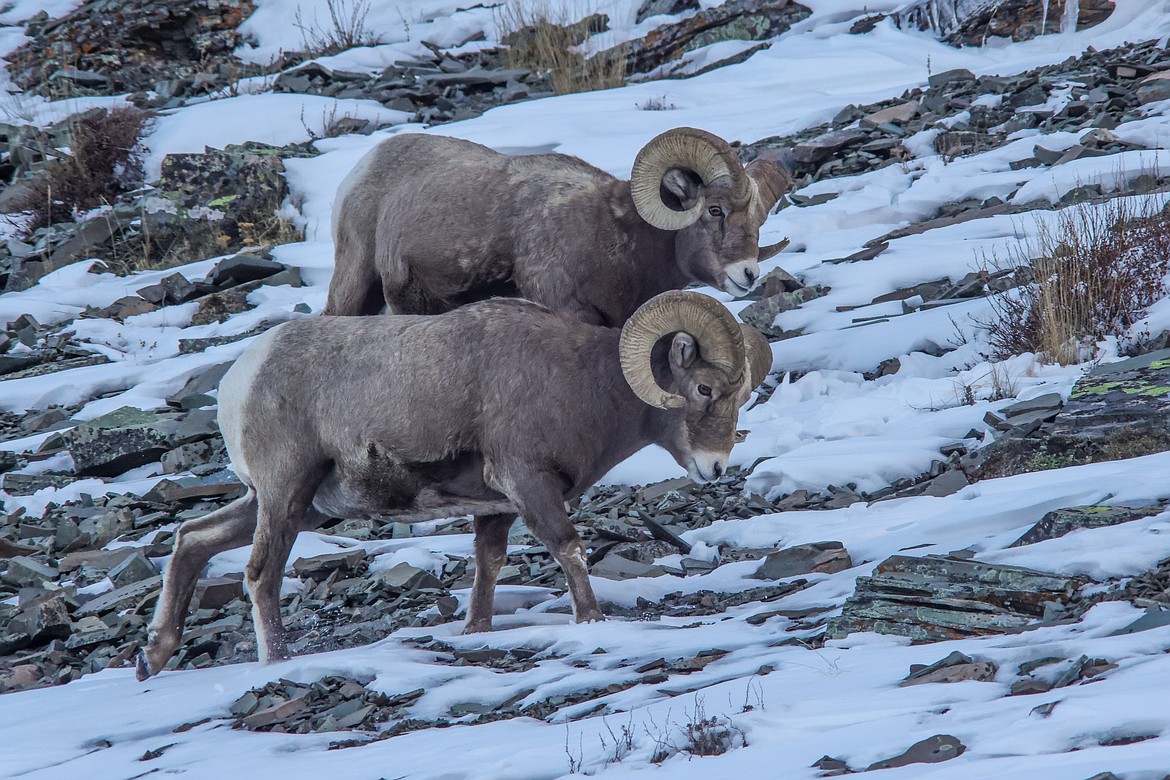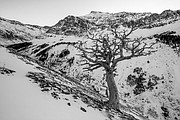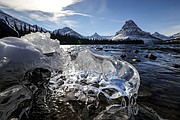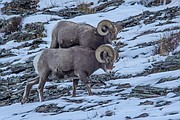Bighorn Adventures
The rut is officially on and wildlife in Glacier are still out and about as winter temperatures begin to set in. The lakes are not frozen over yet, but there is already plenty of snow on the trails and more as you get higher into the mountains.
Wildlife sightings are more rare these days, so to find them we had to traverse into the mountains where a small herd of rams were looking for food. Because many of the roads are closed in the park, plan your trips considering the extra distance it takes to get to the trailhead, as well as for shorter days as we near the winter solstice. For example, our trip to find the sheep in the Two Medicine area took about six hours hiking about 12 miles and 1,350 feet gained.
Sometimes confused with mountain goats, bighorn sheep usually have a darker coat, and the males, also known as rams, are known for their massive horns that wrap around their heads.
During the rut, when sheep are looking for a mate and their testosterone levels rise, males can be seen running full speed at each other and clash their horns together. This band of bachelors was not up for it, however.
Bighorn sheep should be respectfully viewed from a distance. Never feed any of Glacier’s wild animals.


